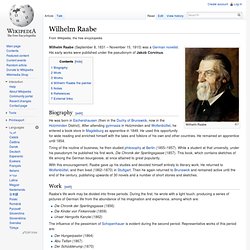

Why learn German? Communicate in German - Business German - Understand German Culture. Blog Germany, expat Germany. Herr Graff's German Blog. German Dumpling Recipes - Griessnockerlsuppe. German Dumpling Recipes Griessnockerlsuppe If you are looking for German dumpling recipes then try this one for Griessnockerlsuppe.

Not only is it easy to make, but tastes delicious too. A Nockerl is a small dumpling. For my soup recipe they are made from semolina. German Dumpling Soup Recipe 40g butter 60g coarse semolina 1 egg salt and nutmeg 2 lites meat broth cooked strips of beef chopped chives Beat the butter until smooth and creamy. Heat the beef broth and then using 2 teaspoons form small dumplings from the semolina mixture. If liked add strips of cooked beef and cooked carrots to the soup. Crescent Pie with Beef and Cheese. In these hi-tech times, cooking a pleasant beef dish can be as simple as a simple search on an internet search engine, but sadly, so often recipes found on the Web are unsatisfactory as the recipes are generally unchecked or are riddled with errors.

In this report, we will share a checked and tested dish that our family enjoys; ‘Crescent Pie made with Beef & Cheese’. Furthermore, we want to demonstrate that it is not necessary to travel to a restaurant merely to savour an enjoyable dinner. Mom’s home cooking should be a great event for you and your relations. Remember, there are a large number of different forms of beef – and also unusual types of beef, such as Wagyu – so if you are unsure of which types of beef to buy, don’t hesitate to consult the butcher, they are typically all too happy to offer you advice.
Beef is one of the country’s best loved meat products, and why not!. Crescent Pie Recipe of Beef & Cheese You will need Instructions Set the oven at 190 degree C. Serves 5. German Recipes, Schnitzel Recipe & German Potato Salad Recipe. German food recipes. LEO Deutsch-Englisches Wörterbuch. Stefan Zweig.
Stefan Zweig (German: [tsvaɪk]; November 28, 1881 – February 22, 1942) was an Austrian novelist, playwright, journalist and biographer.

At the height of his literary career, in the 1920s and 1930s, he was one of the most popular writers in the world.[1] Biography[edit] Zweig was born in Vienna, the son of Moritz Zweig (1845–1926), a wealthy Jewish textile manufacturer, and Ida Brettauer (1854–1938), from a Jewish banking family.[2] Joseph Brettauer did business for twenty years in Ancona, Italy, where his second daughter Ida was born and grew up, too. Zweig was related to the Czech writer Egon Hostovský, who described Zweig as "a very distant relative";[3] some sources describe them as cousins.
Zweig married Friderike Maria von Winternitz (born Burger) in 1920; they divorced in 1938. In 1934, following Hitler's rise to power in Germany, Zweig left Austria. The Zweigs' house in Brazil was later turned into a museum and is now known as Casa Stefan Zweig. Brennendes Geheimnis by Stefan Zweig. Der tolle Mensch by Friedrich Wilhelm Nietzsche - Project Gutenb. German. Der Struwwelpeter by Heinrich Hoffmann.
Die Leiden des jungen Werther by Johann Wolfgang von Goethe - Pr. Le avventure di Pinocchio by Carlo Collodi. Bildergeschichten by Wilhelm Busch. Kleider machen Leute by Gottfried Keller. Der tolle Mensch : Nietzsche, Friedrich Wilhelm, 1844-1900 : Fre. Yahoo! JAPAN. Wilhelm Raabe. Wilhelm Raabe Wilhelm Raabe (September 8, 1831 – November 15, 1910) was a German novelist.

His early works were published under the pseudonym of Jakob Corvinus. Biography[edit] Tiring of the routine of business, he then studied philosophy at Berlin (1855–1857). While a student at that university, under his pseudonym he published his first work, Die Chronik der Sperlingsgasse (1857). With this encouragement, Raabe gave up his studies and devoted himself entirely to literary work. Work[edit] Raabe's life work may be divided into three periods. Die Chronik der Sperlingsgasse (1856)Die Kinder von Finkenrode (1859)Unser Herrgotts Kanzlei (1862) The influence of the pessimism of Schopenhauer is evident during the second period.
Der Hungerpastor (1864)Abu Telfan (1867)Der Schüdderump (1870) These three works are sometimes referred to as a trilogy. During the third period of the novelist's life his works no longer show this pessimistic strain. Die schwarze Galeere by Wilhelm Raabe.